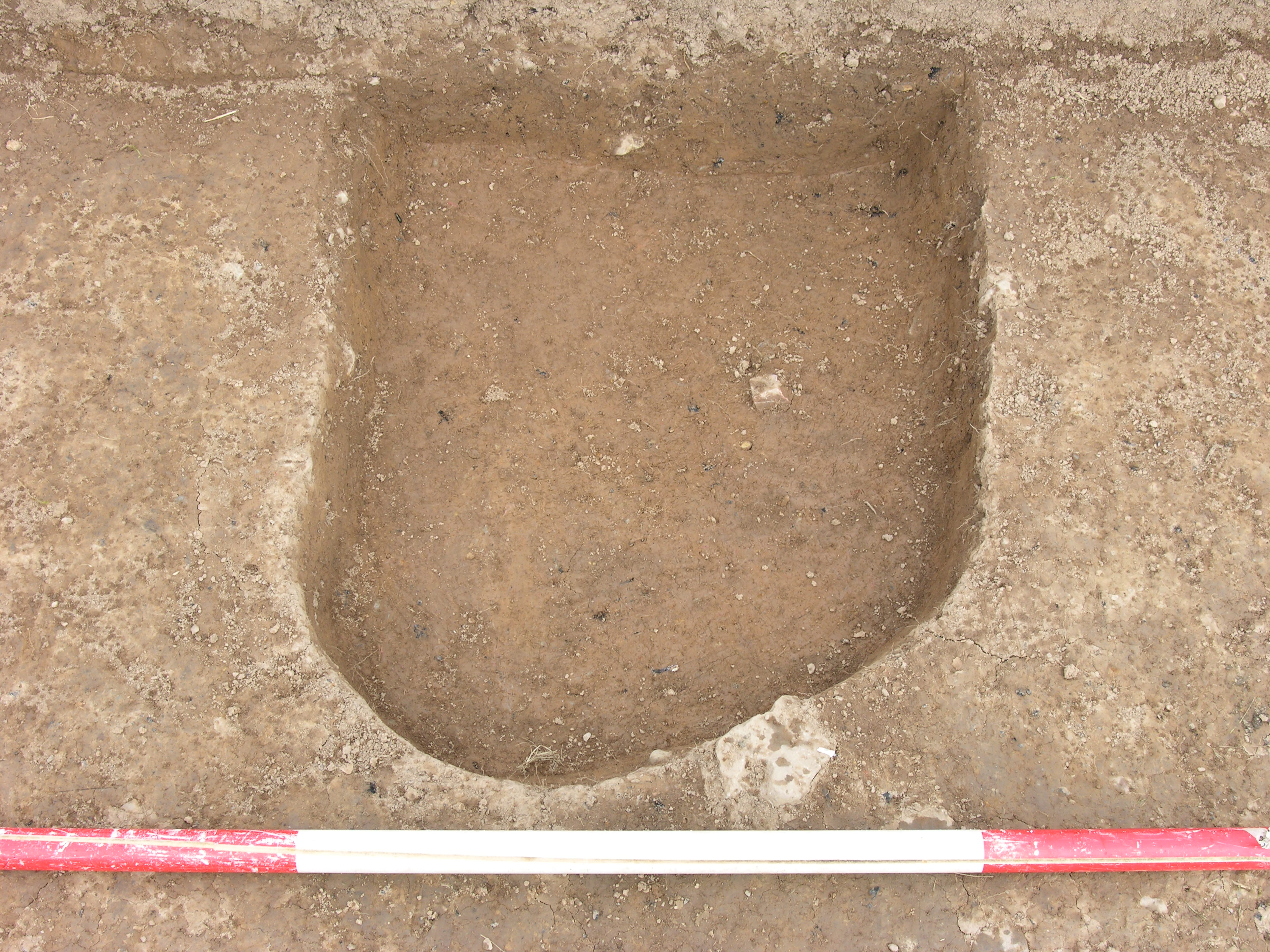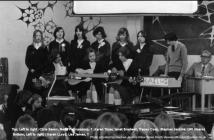Gellir lawrlwytho cynnwys at ddefnydd anfasnachol, megis defnydd personol neu ar gyfer adnoddau addysgol.
Ar gyfer defnydd masnachol cysyllwch yn uniongyrchol gyda deilydd yr hawlfraint os gwelwch yn dda.
Read more about the The Creative Archive Licence.
Disgrifiad
As the excavation in trench 2 progressed, archaeological evidence for garden features began to become apparent. However seeing these features in the ground was rather tricky due to the nature of the deposits and soil colour, in fact one of the ways in which we were able to tell there was a change in composition was by the feel of the trowel and looking for increased or decreased stone content (Austin & Dollery 2011). Once the topsoil had been removed there were some notable changes. In the west of the trench there was a slight colour change with pinkish brown clay appearing with a mixture of small stones. In the middle of the trench there was a high concentration of stone and compacted gravel suspended within an orange/brown soil matrix. To the east of the trench the soil remained the same orangey brown colour, however with a much fewer stone content. Although the visualisation of the archaeology was slight, some indication of what these deposits equated to began to become recognisable. After the investigation of the orange brown soil in the east of the trench an archaeological feature became visible. This feature was roughly semi circular in shape and consisted of the same colour soil as the surrounding context (orangey brown) however it also included coal flex, something the surrounding context did not have. A half section was excavated within this feature and it became clear that this deposit was the fill of a cut (Austin & dollery 2011). One the half section was recorded and plotted onto a plan the rest of the fill was removed to reveal the elongated cut feature that you can see on the photograph.
Within the fill of this feature some pottery was discovered providing some evidence for the dating of this feature. The pottery that was discovered where some fragments of salt glazed westerwald stoneware that originated from Germany and was a common import to Britain during the late 18th century. This provided a rough date of 1750 – 1790 (Williams 2011). As the cut of the feature was well preserved and the fill resembled that closely with the surrounding context, it was clear that no sooner had this feature been excavated that it was backfilled. This gave some clear indications as to what this feature was. The shallow elongated pit that resembled the type of feature associated with planting and horticulture and provided clear evidence for a formally arranged garden on the site.
Austin, D. & Dollery, J. The Excavation. In Austin, D [Ed] 2011 Paradise Lost In Search of a Garden before the Garden: Middleton Hall. Report of project conducted in 2011. Heritage Lottery Fund
Williams, D. The Finds: An Interim Report. In Austin, D [Ed] 2011 Paradise Lost In Search of a Garden before the Garden: Middleton Hall. Report of project conducted in 2011. Heritage Lottery Fund






Oes gennych chi wybodaeth ychwanegol am yr eitem hon? Gadewch sylwad isod
Sylwadau (0)
Rhaid mewngofnodi i bostio sylw